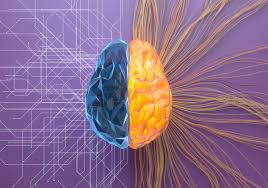A groundbreaking preclinical study by the Perelman School of Medicine at the University of Pennsylvania has shed light on the structural differences between male and female brains, which may explain why females are more susceptible to concussions and experience prolonged recovery periods. Published in Acta Neuropathologica, the research highlights that crucial brain structures responsible for signaling are narrower and less dense in females, making them more vulnerable to brain injuries such as concussions.
Each year, approximately 50 million individuals worldwide suffer from concussions, also known as mild traumatic brain injuries (TBIs). While the term “mild” is often used, the condition can lead to severe and long-lasting cognitive dysfunctions for over 15 percent of those affected. Symptoms include difficulty concentrating, impaired learning, memory issues, and decision-making challenges.
Despite males accounting for the majority of emergency department visits for concussions, largely due to higher exposure to high-risk activities, recent data indicates that female athletes experience a higher rate of concussions and suffer worse outcomes than their male counterparts in the same sports.
“Clinicians have observed for a long time that females suffer from concussion at higher rates than males in the same sports, and that they take longer to recover cognitive function, but couldn’t explain the underlying mechanisms of this phenomenon,” explained senior author Douglas Smith, MD, a professor of Neurosurgery and director of Penn’s Center for Brain Injury and Repair. “The variances in brain structures of females and males not only illuminate why this disparity exists, but also expose biomarkers, such as axon protein fragments, that can be measured in the blood to determine injury severity, monitor recovery, and eventually help identify and develop treatments that help patients repair these damaged structures and restore cognitive function.”
Axons, which connect neurons and facilitate communication across the brain, are critical components of the brain’s white matter. These delicate structures are particularly susceptible to damage from concussions. The study revealed that females possess a higher population of smaller axons, which are more prone to injury. Additionally, female brains exhibited a greater loss of sodium channels post-concussion, further impairing brain signaling and contributing to cognitive deficits.
Using large animal models, researchers identified these structural differences and their impact on brain function. “The differences in brain structure not only tell us a lot about how brain injury affects males and females differently but could offer insights into other brain conditions that impact axons, like Alzheimer’s and Parkinson’s disease,” said Smith. “If female brains are more vulnerable to damage from concussion, they might also be more vulnerable to neurodegeneration, and it’s worth further research to understand how sex influences the structure and functions of the brain.”
This significant research was funded by the National Institutes of Health (R01NS092398, R01NS038104, R01NS094003, U54NS115322, K08NS110929, K23NS123340), the Department of Defense (HT94252311039, W81XWH-21-1-0590, HT9425-23-1-0981), and the Alzheimer’s Association (AARFD-23-1144656).












